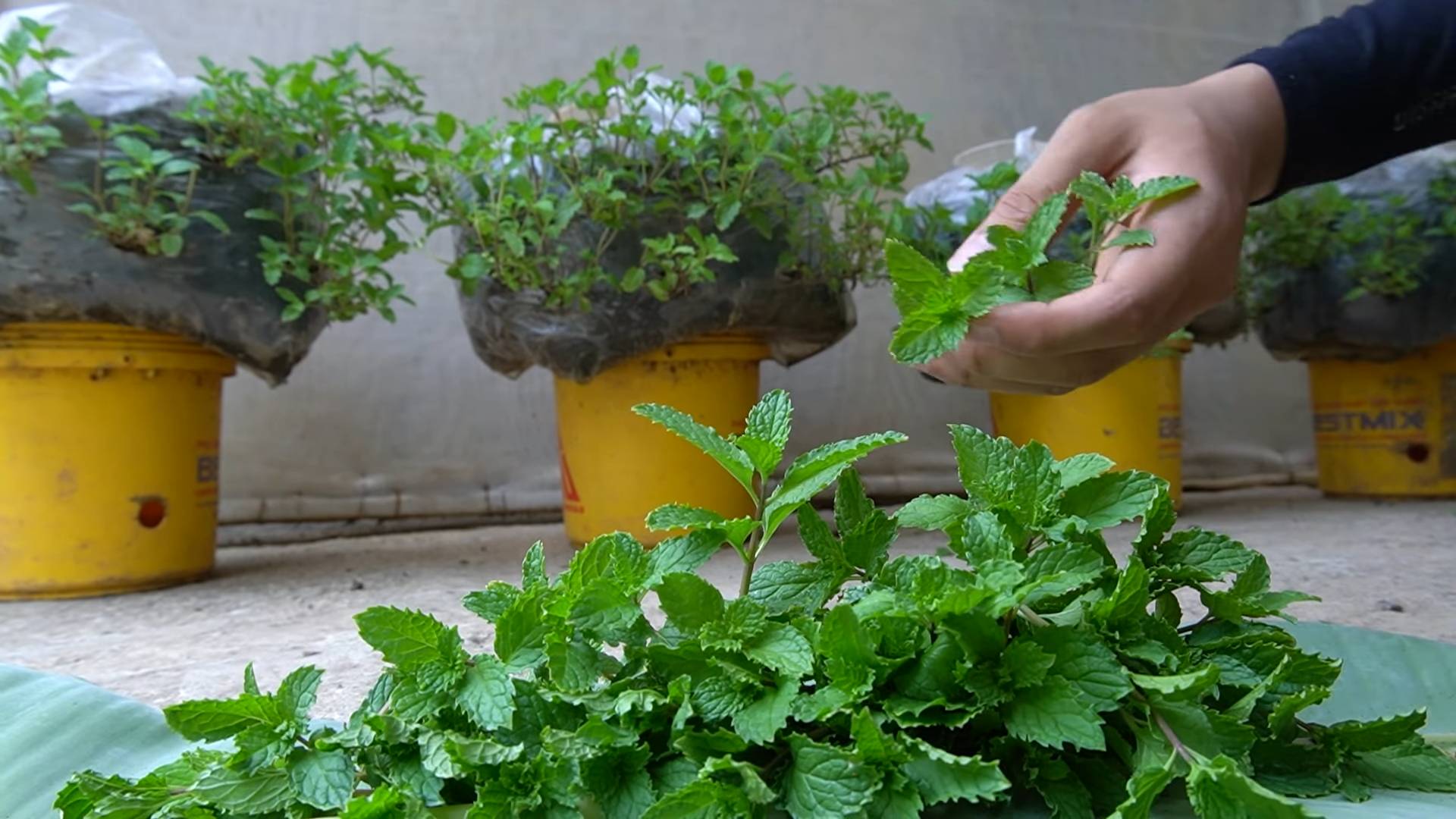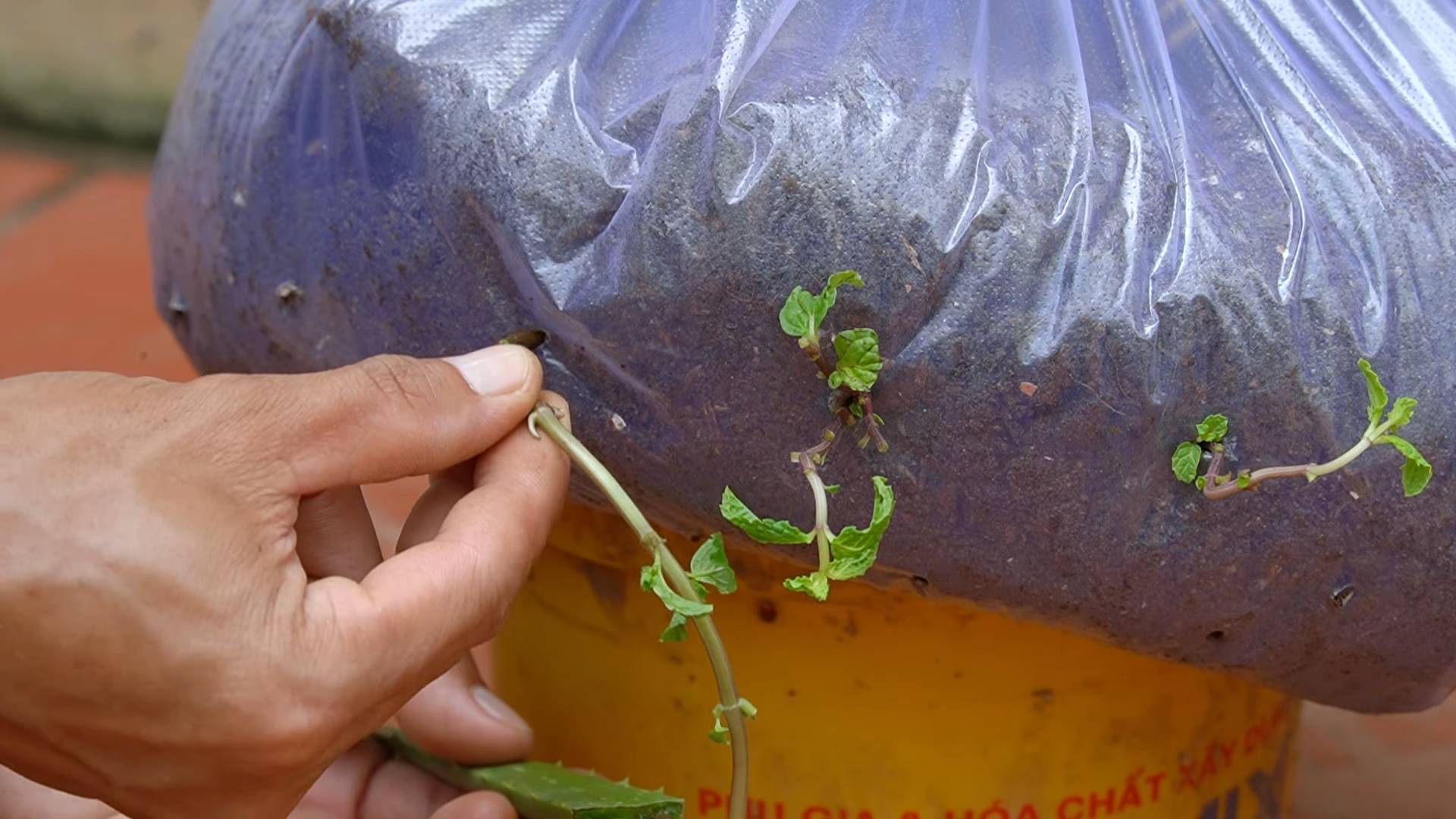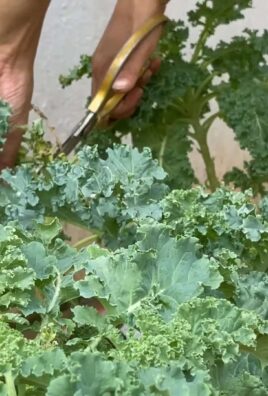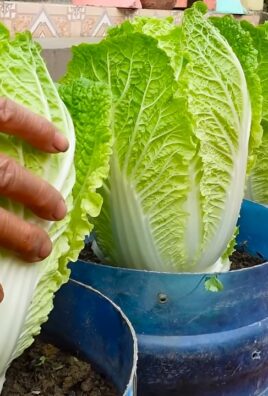Homegrown vegetable family meals – imagine serving up a delicious, nutritious dinner made entirely from ingredients you nurtured yourself! There’s something incredibly satisfying about that, isn’t there? For centuries, cultivating our own food has been a cornerstone of human civilization. From ancient Roman kitchen gardens to the victory gardens of World War II, the ability to grow food has represented self-sufficiency, resilience, and a deep connection to the earth.
But let’s be honest, in today’s busy world, the idea of a sprawling vegetable patch can feel daunting. That’s where this article comes in! I’m going to share some simple, effective, and totally doable DIY tricks and hacks to help you create amazing homegrown vegetable family meals, even if you only have a small balcony or a sunny windowsill.
Why do you need these tricks? Because fresh, flavorful, and pesticide-free produce is within everyone’s reach! Plus, gardening is a fantastic stress reliever, a fun activity for the whole family, and a great way to teach kids about where their food comes from. So, get ready to roll up your sleeves and discover the joy of growing your own delicious, healthy meals. Let’s get started!

Creating a Thriving Homegrown Vegetable Garden for Family Meals
Okay, let’s dive into the wonderful world of growing your own vegetables! There’s nothing quite like the taste of fresh, homegrown produce, and it’s a fantastic way to get the whole family involved in healthy eating. Plus, it’s surprisingly rewarding to watch those tiny seeds transform into delicious meals. I’m going to walk you through the steps to create a vegetable garden that will provide you with a bounty of fresh ingredients for your family’s table.
Planning Your Garden: Location, Location, Location!
Before you even think about planting, you need to figure out where your garden will live. This is crucial because sunlight is your vegetables’ best friend.
* **Sunlight is Key:** Most vegetables need at least 6-8 hours of direct sunlight per day. Observe your yard throughout the day to see where the sun shines the longest. South-facing areas are generally the sunniest.
* **Soil Matters:** Good soil is the foundation of a healthy garden. You’ll want well-draining soil that’s rich in organic matter. If your soil is compacted or clay-heavy, don’t worry! We’ll talk about amending it later.
* **Water Access:** Easy access to water is essential. Lugging watering cans across the yard gets old fast. Consider a nearby hose bib or even installing a rain barrel.
* **Size Matters (at least initially):** Start small! It’s better to have a small, well-maintained garden than a large, overgrown one. A 4×8 foot raised bed is a great starting point. You can always expand later.
* **Consider Existing Plants:** Be mindful of trees and shrubs that might cast shade or compete for nutrients.
Choosing Your Vegetables: Family Favorites First!
Now for the fun part: deciding what to grow! Think about what your family enjoys eating. There’s no point in growing something nobody will touch.
* **Family Preferences:** Make a list of your family’s favorite vegetables. Prioritize those that are relatively easy to grow, especially if you’re a beginner.
* **Climate Considerations:** Choose vegetables that are suited to your climate. Check your local hardiness zone to determine which plants will thrive in your area.
* **Growing Season:** Consider the length of your growing season. Some vegetables, like tomatoes and peppers, need a long growing season, while others, like lettuce and radishes, can be harvested quickly.
* **Space Requirements:** Be mindful of how much space each vegetable needs. Some, like pumpkins and watermelons, require a lot of room to spread out.
* **Succession Planting:** Plan for succession planting to extend your harvest. This means planting new crops every few weeks to ensure a continuous supply of fresh vegetables. For example, plant lettuce every two weeks.
Preparing the Soil: The Foundation of Your Garden
Healthy soil is the key to healthy plants. Whether you’re using an existing garden bed or creating a new one, you’ll need to prepare the soil properly.
* **Clear the Area:** Remove any grass, weeds, rocks, or debris from the area where you’ll be planting.
* **Soil Testing:** A soil test can tell you the pH level and nutrient content of your soil. You can purchase a soil testing kit at most garden centers or send a sample to your local agricultural extension office.
* **Amending the Soil:** Based on your soil test results, you may need to amend the soil.
* **Compost:** Compost is a fantastic soil amendment that adds organic matter, improves drainage, and provides nutrients.
* **Manure:** Well-rotted manure is another excellent soil amendment. Be sure to use aged manure to avoid burning your plants.
* **Peat Moss:** Peat moss can help improve drainage and water retention in sandy soils.
* **Lime:** Lime can raise the pH of acidic soils.
* **Sulfur:** Sulfur can lower the pH of alkaline soils.
* **Tilling or Digging:** Loosen the soil to a depth of at least 12 inches. This will allow the roots of your plants to grow easily. You can use a tiller or a garden fork to do this.
* **Raking and Leveling:** Rake the soil smooth and level. This will make it easier to plant your vegetables.
Planting Your Vegetables: From Seed to Supper!
Now for the moment you’ve been waiting for: planting your vegetables!
* **Starting Seeds Indoors (Optional):** Starting seeds indoors gives you a head start on the growing season, especially for vegetables that need a long growing season.
* **Seed Starting Mix:** Use a seed starting mix, not regular potting soil. Seed starting mix is lighter and provides better drainage.
* **Seed Trays or Pots:** Use seed trays or small pots to start your seeds.
* **Planting Depth:** Follow the instructions on the seed packet for planting depth.
* **Watering:** Keep the soil moist but not soggy.
* **Light:** Provide plenty of light. A sunny windowsill or a grow light will work.
* **Hardening Off:** Before transplanting your seedlings outdoors, you’ll need to harden them off. This means gradually exposing them to outdoor conditions over a period of a week or two.
* **Direct Sowing:** Some vegetables, like carrots, radishes, and lettuce, are best sown directly into the garden.
* **Prepare the Soil:** Make sure the soil is loose and well-drained.
* **Planting Depth:** Follow the instructions on the seed packet for planting depth.
* **Watering:** Keep the soil moist until the seeds germinate.
* **Thinning:** Once the seedlings emerge, you may need to thin them out to provide adequate spacing.
* **Transplanting Seedlings:** When transplanting seedlings, be careful not to damage the roots.
* **Dig a Hole:** Dig a hole that’s slightly larger than the root ball of the seedling.
* **Remove the Seedling:** Gently remove the seedling from its pot or tray.
* **Place the Seedling:** Place the seedling in the hole and backfill with soil.
* **Water Thoroughly:** Water the seedling thoroughly.
* **Spacing:** Follow the instructions on the seed packet or plant tag for spacing. Proper spacing is essential for healthy growth and good air circulation.
Caring for Your Garden: Watering, Weeding, and Feeding
Once your vegetables are planted, you’ll need to provide them with regular care.
* **Watering:** Water your vegetables regularly, especially during dry spells. Water deeply and less frequently, rather than shallowly and often. Aim to water at the base of the plants to avoid wetting the foliage, which can lead to disease. Early morning is the best time to water.
* **Weeding:** Weeds compete with your vegetables for water, nutrients, and sunlight. Remove weeds regularly by hand or with a hoe. Mulching can help suppress weeds.
* **Fertilizing:** Vegetables need nutrients to grow. Fertilize your vegetables regularly with a balanced fertilizer. Follow the instructions on the fertilizer label. You can also use organic fertilizers, such as compost tea or fish emulsion.
* **Pest and Disease Control:** Keep an eye out for pests and diseases. If you spot any problems, take action immediately. There are many organic pest and disease control methods available, such as insecticidal soap, neem oil, and copper fungicide.
* **Mulching:** Mulching helps to retain moisture in the soil, suppress weeds, and regulate soil temperature. Use organic mulches, such as straw, wood chips, or shredded leaves.
Harvesting Your Vegetables: The Fruits (and Vegetables!) of Your Labor
Harvesting your vegetables at the right time is essential for the best flavor and texture.
* **Harvesting Time:** Follow the instructions on the seed packet or plant tag for harvesting time.
* **Harvesting Techniques:** Use the appropriate harvesting techniques for each vegetable. For example, cut lettuce leaves with a knife, pull carrots from the ground, and snap beans off the plant.
* **Storage:** Store your harvested vegetables properly to keep them fresh. Some vegetables, like tomatoes and peppers, can be stored at room temperature. Others, like lettuce and carrots, should be stored in the refrigerator.
Specific Vegetable Tips: A Quick Guide
Here are a few quick tips for growing some popular vegetables:
* **Tomatoes:** Provide support with stakes or cages. Prune suckers to encourage fruit production.
* **Peppers:** Plant in warm soil. Water regularly.
* **Lettuce:** Plant in cool weather. Harvest frequently.
* **Carrots:** Plant in loose, well-drained soil. Thin seedlings to provide adequate spacing.
* **Beans:** Plant after the last frost. Provide support for climbing varieties.
* **Zucchini:** Plant in fertile soil. Harvest frequently.
Troubleshooting: Common Garden Problems and Solutions
Even with the best planning, you might encounter some problems in your garden. Here are a few common issues and how to address them:
* **Pests:** Identify

Conclusion
So, there you have it! Transforming your homegrown vegetables into delicious and satisfying family meals is not just a culinary endeavor; it’s an investment in your family’s health, a celebration of seasonal flavors, and a rewarding connection to the earth. This isn’t about complicated techniques or fancy ingredients; it’s about embracing the simplicity and freshness of your garden’s bounty and turning it into something truly special.
Why is this DIY approach a must-try? Because it’s about more than just saving money (though that’s certainly a perk!). It’s about knowing exactly what’s going into your food, avoiding harmful pesticides and additives, and experiencing the unparalleled taste of vegetables picked at their peak ripeness. Imagine the vibrant colors and intense flavors of a tomato you grew yourself, transformed into a rich pasta sauce. Or the crisp sweetness of freshly harvested carrots, roasted to perfection and served alongside a hearty main course. These are experiences you simply can’t replicate with store-bought produce.
Beyond the health benefits and superior taste, creating homegrown vegetable family meals fosters a sense of connection and appreciation. Involving your children in the gardening process, from planting seeds to harvesting the vegetables, teaches them valuable lessons about where their food comes from and the importance of sustainable living. It’s a chance to create lasting memories and instill a love for healthy eating that will last a lifetime.
Ready to take your homegrown vegetable family meals to the next level? Here are a few suggestions and variations to get you started:
* **Spice it up:** Experiment with different herbs and spices to enhance the natural flavors of your vegetables. Fresh basil, oregano, thyme, and rosemary are all excellent choices.
* **Get creative with sauces:** Don’t limit yourself to traditional tomato sauce. Try making pesto from your homegrown basil, a creamy cashew sauce, or a tangy vinaigrette.
* **Embrace the seasons:** Adapt your recipes to the vegetables that are in season. In the summer, focus on tomatoes, zucchini, and peppers. In the fall, enjoy squash, pumpkins, and root vegetables.
* **Don’t forget the protein:** Add beans, lentils, tofu, or lean meats to your vegetable dishes to create complete and balanced meals.
* **Roast everything:** Roasting vegetables brings out their natural sweetness and creates a delicious caramelized flavor. Toss them with olive oil, salt, pepper, and your favorite herbs before roasting.
* **Make it a family affair:** Get everyone involved in the cooking process. Let your children help wash vegetables, stir sauces, or set the table.
We are confident that once you experience the joy and satisfaction of creating delicious and healthy meals from your own garden, you’ll never look back. It’s a journey of discovery, creativity, and connection that will nourish your body, mind, and soul.
So, what are you waiting for? Grab your gardening gloves, harvest your vegetables, and get cooking! We encourage you to try this DIY trick and share your experiences with us. Tell us about your favorite homegrown vegetable recipes, your gardening successes (and failures!), and any tips or tricks you’ve learned along the way. Let’s create a community of passionate gardeners and cooks who are dedicated to bringing the goodness of homegrown vegetables to their family tables. Share your photos and stories on social media using #HomegrownFamilyMeals. We can’t wait to see what you create!
Frequently Asked Questions (FAQ)
What if I don’t have a garden? Can I still make homegrown vegetable family meals?
While having your own garden is ideal, you can still enjoy the benefits of homegrown vegetables even if you don’t have a lot of space. Consider growing vegetables in containers on your balcony, patio, or even indoors. Herbs, tomatoes, peppers, and lettuce are all relatively easy to grow in containers. You can also support local farmers by purchasing vegetables from farmers’ markets or community-supported agriculture (CSA) programs. This ensures that you’re getting fresh, locally grown produce while supporting your community.
How do I store my homegrown vegetables to keep them fresh for longer?
Proper storage is crucial for preserving the freshness and flavor of your homegrown vegetables. Here are a few tips:
* **Leafy greens:** Wash and dry leafy greens thoroughly, then store them in a plastic bag or container lined with a paper towel in the refrigerator.
* **Root vegetables:** Store root vegetables like carrots, potatoes, and beets in a cool, dark, and humid place, such as a root cellar or basement.
* **Tomatoes:** Store tomatoes at room temperature, away from direct sunlight, until they are ripe. Once ripe, you can store them in the refrigerator to slow down the ripening process.
* **Herbs:** Store fresh herbs in a glass of water, like flowers, or wrap them in a damp paper towel and store them in a plastic bag in the refrigerator.
* **Onions and garlic:** Store onions and garlic in a cool, dry, and well-ventilated place.
What are some easy vegetable recipes for beginners?
If you’re new to cooking with homegrown vegetables, start with simple recipes that highlight their natural flavors. Here are a few ideas:
* **Roasted vegetables:** Toss your favorite vegetables with olive oil, salt, pepper, and herbs, then roast them in the oven until tender and slightly caramelized.
* **Salads:** Combine fresh greens, chopped vegetables, and a simple vinaigrette for a refreshing and healthy salad.
* **Soups:** Use your homegrown vegetables to make a hearty and flavorful soup.
* **Stir-fries:** Stir-fries are a quick and easy way to use up leftover vegetables.
* **Pasta dishes:** Add chopped vegetables to your favorite pasta sauce for a nutritious and delicious meal.
How can I get my kids to eat more vegetables?
Getting kids to eat their vegetables can be a challenge, but here are a few tips that might help:
* **Involve them in the process:** Let your children help with gardening, shopping, and cooking. When they’re involved in the process, they’re more likely to try new things.
* **Make it fun:** Cut vegetables into fun shapes, create colorful salads, or serve them with dips.
* **Offer vegetables as snacks:** Keep cut vegetables readily available for snacking.
* **Don’t force them:** Forcing children to eat vegetables can backfire. Instead, offer them a variety of vegetables and let them choose what they want to eat.
* **Be a role model:** Children are more likely to eat vegetables if they see their parents eating them.
What are the best vegetables to grow for family meals?
The best vegetables to grow for family meals depend on your family’s preferences and your climate. However, some popular and easy-to-grow options include:
* **Tomatoes:** Versatile and delicious, tomatoes can be used in sauces, salads, and sandwiches.
* **Zucchini:** Prolific and easy to grow, zucchini can be used in a variety of dishes, from stir-fries to breads.
* **Peppers:** Peppers add flavor and color to many dishes.
* **Lettuce:** Easy to grow and perfect for salads and sandwiches.
* **Carrots:** Sweet and crunchy, carrots are a great snack and can be used in soups, stews, and salads.
* **Beans:** A good source of protein and fiber, beans are easy to grow and can be used in soups, stews, and salads.
* **Herbs:** Herbs add flavor and aroma to your dishes.
How do I deal with pests and diseases in my vegetable garden?
Pests and diseases can be a challenge for any gardener, but there are many ways to prevent and control them. Here are a few tips:
* **Choose disease-resistant varieties:** When selecting seeds or seedlings, choose varieties that are known to be resistant to common diseases.
* **Practice crop rotation:** Rotate your crops each year to prevent the buildup of pests and diseases in the soil.
* **Keep your garden clean:** Remove weeds and debris from your garden to prevent pests and diseases from spreading.
* **Use organic pest control methods:** Consider using organic pest control methods, such as insecticidal soap, neem oil, or beneficial insects.
* **Water properly:** Water your plants at the base to avoid wetting the leaves, which can promote fungal diseases.
By following these tips, you can create delicious and healthy homegrown vegetable family meals that your whole family will enjoy. Remember to have fun and experiment with different recipes and techniques. Happy cooking!




Leave a Comment